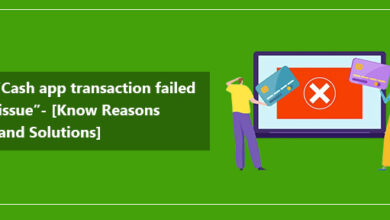Patch Management 101: Understanding the Basics and Enhancing Cybersecurity

In today’s digital battlefield, organisations face a relentless barrage of cyber threats. Patch management, a cornerstone of effective cybersecurity services, fortifies defences by efficiently plugging security holes in critical systems and data.
Neglecting patch management exposes organisations to a nightmare scenario. Unpatched vulnerabilities become gateways for cybercriminals, potentially leading to devastating data breaches, crippling malware infections, and even system outages that grind operations to a halt.
However, patch management service goes beyond simply patching holes. It acts as a preventative shield, proactively mitigating these risks and enhancing overall cybersecurity. By ensuring systems are up to date with the latest security patches, organisations can significantly strengthen their defences and make it far more difficult for attackers to gain a foothold.
What is Patch Management?
Patch management is the systematic process of identifying, acquiring, installing, and verifying software updates (patches) for IT assets. These patches address security vulnerabilities, fix bugs, and improve software performance. Patch management tools are crucial for maintaining the security and functionality of IT systems.
What is Patch Management as a Service (PMaaS)?
Patch Management as a Service (PMaaS) is a cloud-based solution that automates the process of identifying, acquiring, installing, and verifying software patches for both on-premises and cloud-based IT systems. This frees up IT staff to focus on more strategic tasks while ensuring systems are properly updated and secured. PMaaS can download and install the latest security patches from vendors for on-premises systems and apply relevant patches provided by the cloud provider for cloud-based systems.
Why Patch Management Service is Essential for Organisations
Organisations must prioritise patch management to safeguard the security and integrity of their systems and data. Here are several key reasons:
- Mitigating Vulnerabilities: Patch management proactively addresses known vulnerabilities in software and systems. By promptly applying updates and patches, organisations can close security gaps and significantly reduce the risk of cyberattacks that exploit these weaknesses.
- Enhanced Protection: Unpatched vulnerabilities are prime targets for cybercriminals to launch attacks and distribute malware. Patch management ensures systems are fortified with the latest security measures, effectively minimising the attack surface and thwarting malicious attempts to gain unauthorised access.
- Compliance Adherence: Many industry regulations and standards, such as PCI DSS, Cyber Essentials Plus, and GDPR, mandate organisations to maintain secure systems and promptly apply security patches. Patch management helps organisations meet these compliance requirements by keeping their software and systems up to date with the latest security measures. This avoids potential penalties, reputational damage, and legal liabilities.
- Strengthened Cybersecurity Posture: Patch management is a foundational element of any comprehensive cybersecurity strategy. By staying current with updates and patches, organisations can significantly bolster their security posture, making it far more difficult for cybercriminals to exploit vulnerabilities. This reduces the likelihood of successful attacks and enhances the overall resilience of the organisation’s cyber defences.
- Improved System Performance: Patches and updates often extend beyond addressing security vulnerabilities. They frequently include bug fixes and performance enhancements. Implementing patch management can improve the stability, reliability, and overall performance of software and systems, leading to smoother operations, a better user experience, and reduced downtime caused by software issues.
Patch Management Frequency: Balancing Speed and Stability
While patch management is critical for security, determining the optimal frequency can be complex. Here’s a breakdown of key considerations:
- Ideal Scenario: Early and Frequent Patching
Ideally, organisations should strive to initiate the testing and deployment cycle for security patches as soon as they become available. This proactive approach minimises the vulnerability window, even if it necessitates deploying patches outside the usual schedule.
- Challenges of Scheduled Patching
Even with a defined patching schedule, timely deployment isn’t guaranteed. While conflicts with service-level agreements (SLAs) are uncommon, they can necessitate delaying patch deployment to maintain service availability.
- The Risks of Delayed Patching
In reality, some organisations either delay patch deployment excessively or forgo it entirely. This significantly increases the risk of a security breach. Even with swift breach detection, the damage caused during the compromised period can be substantial before normal operations are restored.
Unleash Peak Security with the Right Patch Management Solution
Robust patch management goes beyond simply patching vulnerabilities as they emerge: it should also leverage metrics that provide valuable insights into patching performance. A comprehensive patch management solution from the right cybersecurity services provider can be a strategic step in fortifying your organisation’s cybersecurity posture and maximising the return on your cybersecurity investments.



